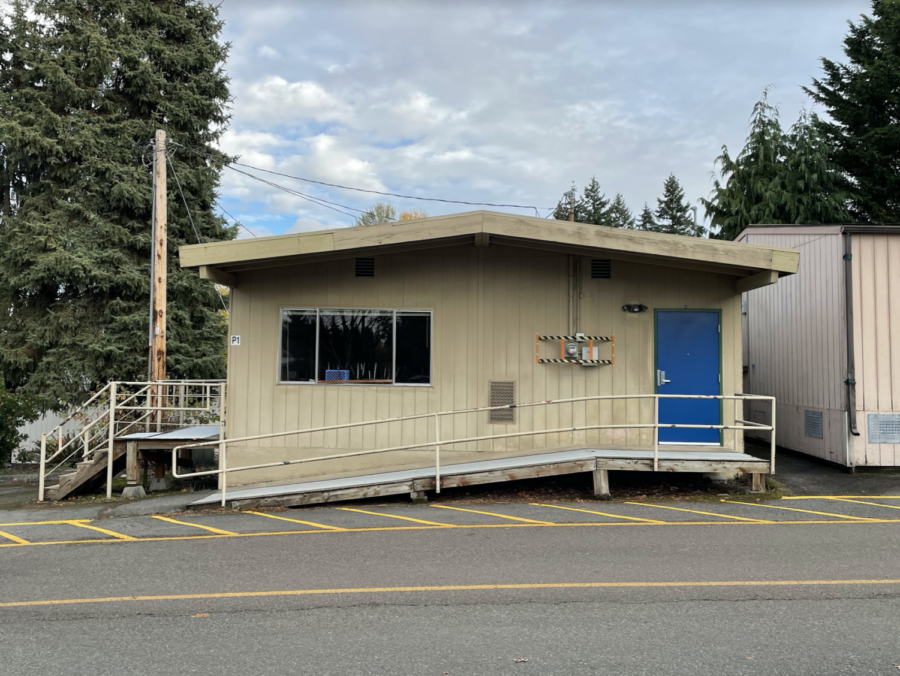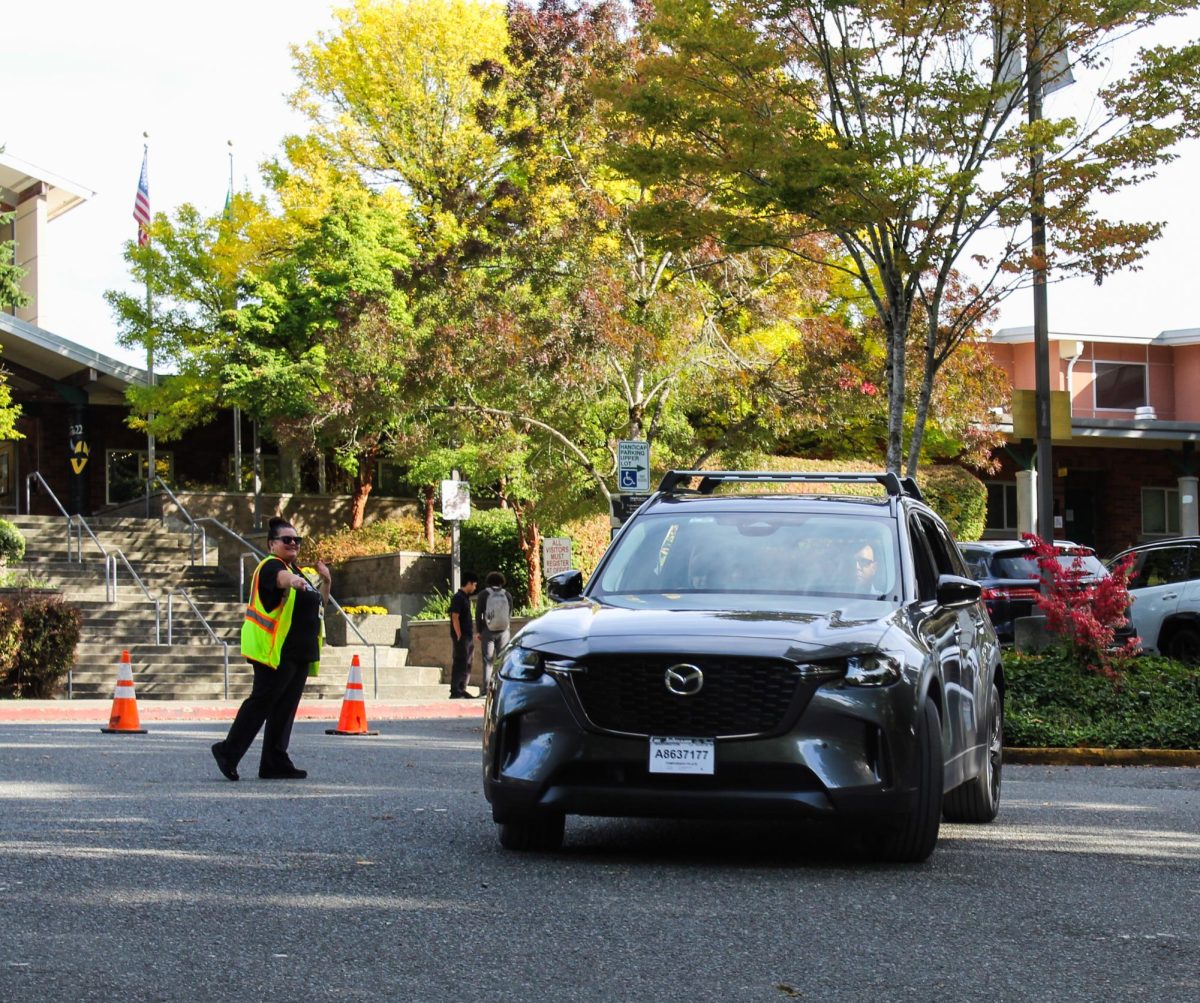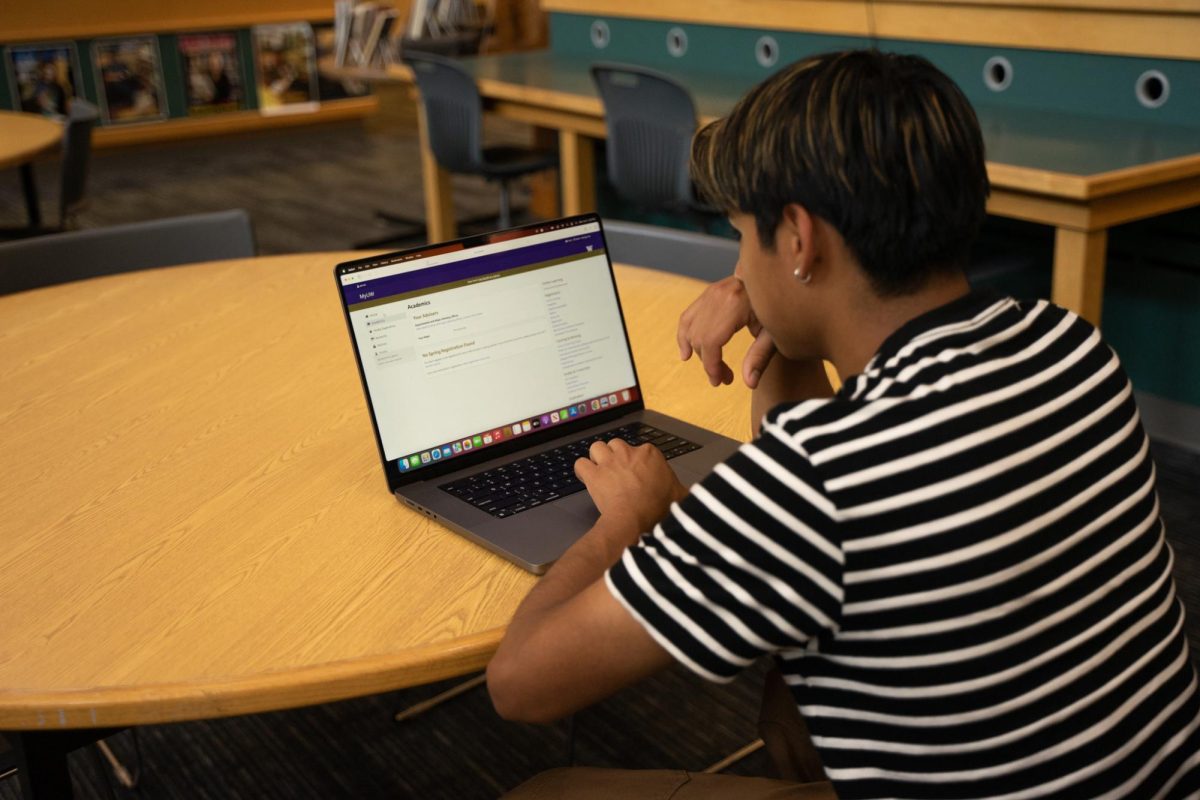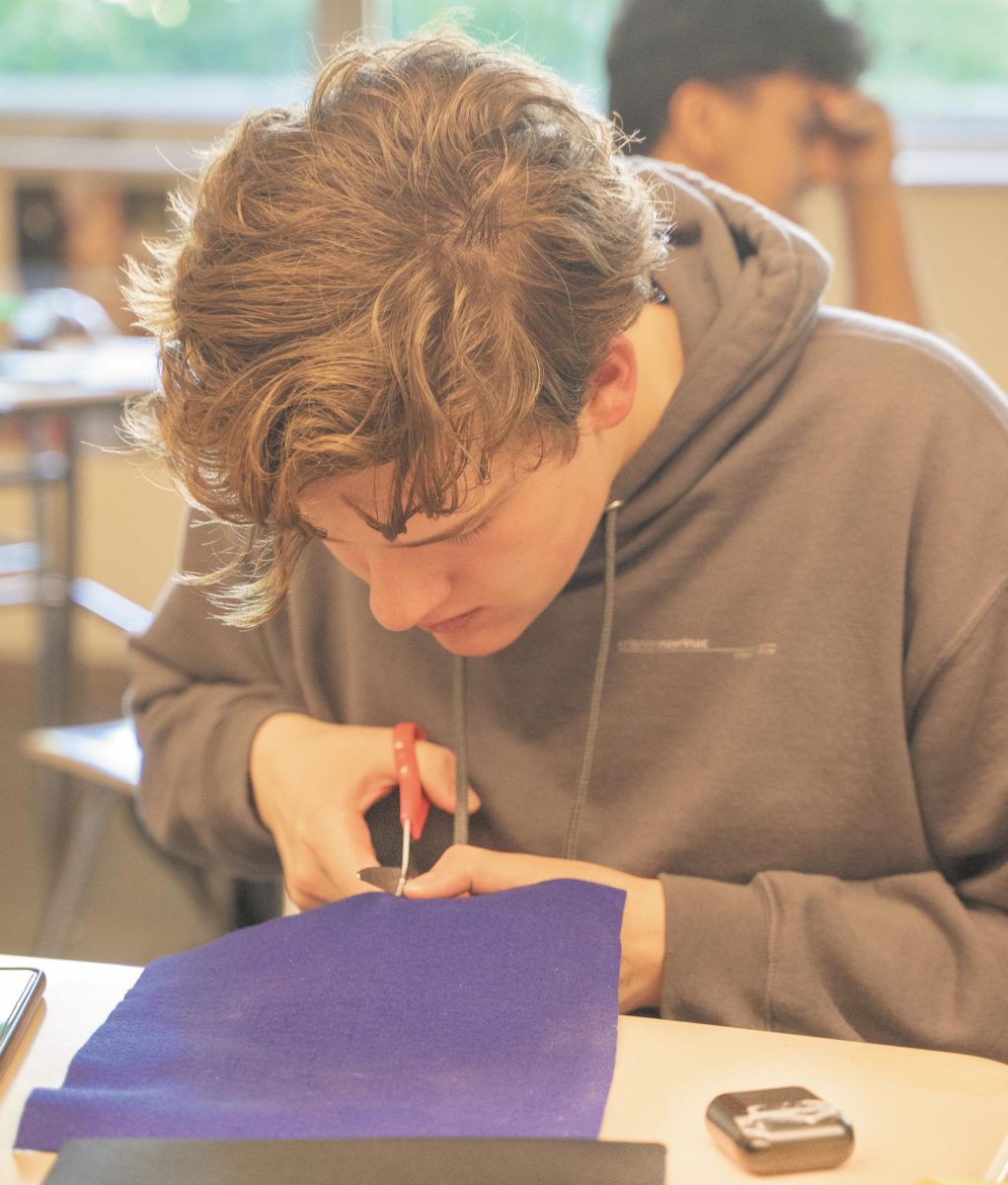Throughout much of Inglemoor’s history, there has been a notably consistent part of the educational experience for many students and teachers: portables. For decades, portables have sat in various locations around the campus, serving as overflow classrooms when there has not been enough space in the main buildings. They have been the subject of both praise and criticism, but nearly everyone seems to agree about their longevity. “I’ve never known Inglemoor without portables,” said 36-year English teacher Sean Burrus.
The six current portables are located on the southeastern corner of the campus, relatively far from the main building. For Burrus, who previously taught in a classroom in the main building, that isn’t a bad thing.
“There was a real noise issue. I was really loud. There was a teacher that used to just stop [teaching] because I was too loud,” Burrus said. Moving to Portable 6 solved that issue. “I can be as loud as possible…I can bang on the walls and on the board and just do my thing and not worry about disturbing other people,” said Burrus.
However, not all teachers who occupy the portables are as enthusiastic about their distance from the main building. One of them is science teacher Matt Coglon.
“You’re lonelier; you don’t see people as much,” said Coglon. “I think honestly it’s a net negative [to teach in a portable]. I think the big problem is it isolates kids and teachers.” He did note, however, that “it is awesome, as a teacher, to have your own room.”
For many teachers, though, their opinions on the distance are mixed. Spanish teacher Ruth Stremiz said she appreciates that they “don’t really get interruptions.” But there are other unfortunate downsides.
“Just [going] to the bathroom is an expedition. If I say that a student has been out of the classroom for too long, and it’s been 8 minutes, that’s not too long. It’s normal,” said Stremiz.
Math teacher Alicia Bale echoed similar sentiments. “It’s so far from everything, and if I have to go do something in a different room or go to the staff lounge, it’s so far that I can’t really do it in a 5-minute passing period.” But Bale added that “I’m more introverted, so being out here just makes me a little less stressed out because I don’t have so many people walking around directly outside of my room.”
One area of nearly unanimous praise among teachers in portables was their ability to adjust the temperature in their portables. “It’s one of the only places in the school that has air conditioning, which is nice,” said math teacher and former portable occupant Brian Cutler.
Burrus, Coglon, Bale, math teacher Justin Geib, and special education teacher Mickey Blackburn all noted their appreciation of the built-in air conditioning units, though Stremiz said she didn’t like the constant noise.
Leaks, ceiling cracks, broken light fixtures, and other maintenance issues in the aging portables have presented a consistent problem for some teachers.
“The corner used to flood whenever there was a hard rain, and we’ve had lots and lots of air conditioner issues,” Burrus said.
“Sometimes we have a leak here,” Stremiz said.
“The internet is spotty sometimes,” added Spanish teacher Janet Cairns.
Cutler noted as a caveat that “our district is pretty good at fixing problems when they come up.”
Many of the teachers in the portables expressed ambivalence when asked about moving back to a classroom in the main building. However, some noted that they appreciated the community the portables fostered.
“We’re pretty tight for the teachers, which is pretty nice because we have different disciplines,” said Bale. “We get to meet people that we wouldn’t necessarily hang out with normally. We are all a pretty tight-knit community.”
Only one teacher expressed a truly strong opinion about remaining in a portable indefinitely.
“You’re going to pry my portable from my cold, dead fingers,” said Burrus.






















